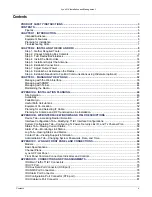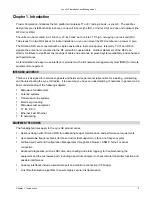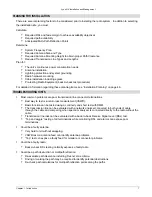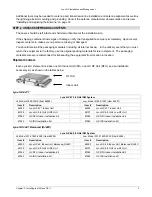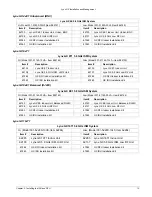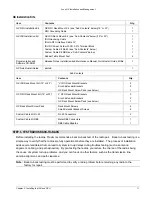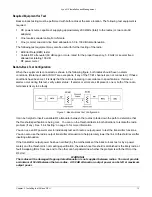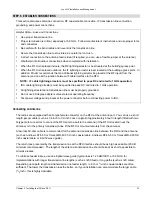
Lynx.GX Installation and Management
Mounting the RFU
1. Orient the RFU for mounting onto the mounting plate so that the connectors are pointed down and the
heatsink fins are facing away from the bracket.
2. Insert carriage bolts into the upper holes of the RFU with the head of the bolt facing the flat side (back) of
the RFU.
When facing the unit, place both thumbs over the hex nuts to hold the bolt in place; place the RFU onto the
mounting plate by setting the square portion of the carriage bolts into the upper, rectangular slots on the
mounting plate. Loosely attach the self-locking hex nuts without tightening.
3. Insert carriage bolts into the lower holes. Loosely attach the self-locking hex nuts.
4. Tighten all hex nuts sufficiently to prevent the RFU from any movement. Ensure the heads of the carriage
bolts are properly aligned with the notches in the mounting plate and placed firmly against the mounting
plate prior to tightening the self-locking hex nuts.
5. Install an RF lightning arrestor that connects to the antenna cable to the RFU Type-N connector labeled To
Antenna and seal the connectors using weatherproofing material (butyl and electrical tape, butyl tape or
self-vulcanizing adhesive). A short jumper cable can be used to connect the RF lightning arrestor, if
necessary. The lightning arrestor must be properly grounded.
6. Install the IF/DC-passing lightning arrestor that connects to the IDU cable to the RFU TNC connector
labeled To IDU and seal the connectors using weatherproofing material. A short jumper cable can be used
to connect the IF/DC lightning arrestor, if necessary. The lightning arrestor must be properly grounded.
7. Attach a grounding wire to the ground post of the RUF and route to a proper low impedance ground point.
Wire of at least 10 AWG should be used; a braid or strap conductor is the preferred choice.
STEP 5. INSTALL AND ADJUST THE ANTENNA
The installation information discussed in this section is generic. For installation procedures specific to the
antenna you are installing, refer to the antenna manufacturer’s documentation.
WARNING (FCC requirement for implementation in the USA):
Any antenna used for the transmitter must be fix-mounted on outdoor permanent structures with a
separation distance of at least 1.5 meters from all persons during normal operation. Antennas must be
professionally installed. Installers must be provided with antenna installation instructions and
transmitter operating conditions, including antenna co-location requirements of CFR47 Part
1.1307(b)(3), for satisfying RF exposure compliance.
Helpful Hints—Mounting Antennas
▪
Proper system and path engineering is required to determine antenna mounting location.
▪
Antenna height is critical for achieving path clearance, ensuring line of sight, and addressing potential path
reflections.
▪
Ensure that the antennas will not be blocked by people during normal operation.
▪
Antenna structure must be secure for wind load and whatever climbing may be necessary.
▪
When mounting the antenna, sufficient clearance must be allocated to swing the antenna at least ±20° from
the desired bearing.
Chapter 2. Installing the IDU and RFU
18

